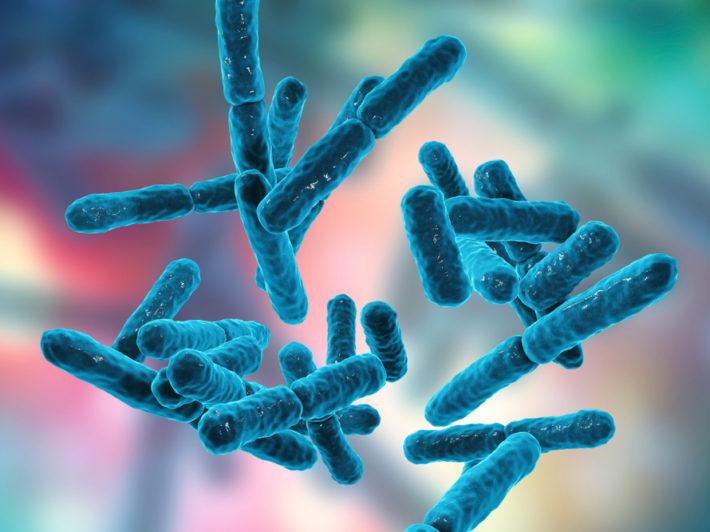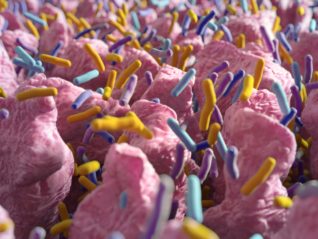
by Melissa Blake, BSc, ND
The use of probiotics has grown substantially over the last several years. Propelled by development in sequencing methods and analytical techniques, there has been a significant increase in knowledge and understanding about the importance of a healthy microbiome.1
The currently accepted definition of a probiotic states they are “live microorganisms which when administered in adequate amounts confer a health benefit on the host”.2 Is this relatively broad definition sufficient for clinicians to guide treatment? Can we assume that any live organism in relevant doses will achieve positive clinical outcomes? We’ve been talking about the use of probiotics for over a hundred years,6 but when it comes to probiotic therapy, what do we really know?
A brief history lesson
As early as the 1680s, long before the term probiotic was coined, Antonie van Leeuwenhoek was studying his oral and fecal microbiota. He noted striking differences in these microbes, as well as in samples collected from healthy vs. unhealthy people at both of these anatomical sites.3
The notion of natural, innate immunity furthered our understanding of gut bacteria. The concept, first discussed by scientist Élie Metchnikoff and for which he was awarded a Nobel Prize in 1908, encountered much resistance from the medical community.4 Metchnikoff insisted disease was more than the germ theory and highlighted the importance of a healthy host. The health of the host, he believed, was largely dependent upon having diverse intestinal flora.5 Metchnikoff’s research suggested that a diet rich in fermented dairy products, due to high content of Lactobacilli, had a positive influence on health and longevity.6 The concept of “probios” (pro-bios, conducive to life of the host) was born.
Research in gut microbiology has become a significant area of interest, including the establishment of the Human Microbiome Project (HMP) in 2008. The HMP has characterized the microbial communities found at several different sites on the human body: nasal passages, oral cavity, skin, gastrointestinal (GI) tract, and urogenital tract and has examined the role of these microbes in human health and disease.7 In 2012, the potential for a mammary microbiome was suggested and later confirmed in a study published in 2014, which identified widespread bacteria within the mammary glands, irrespective of lactation.8
The evidence continues to establish the diversity of the human microbiome, not only from one person to another, but also across specific body sites.9
The human microbiome
A balanced and diverse microbiota plays a role in human health during the lifecycle. Growing evidence supports a connection between maternal microbiome and pregnancy outcomes, including preterm birth, preeclampsia, gestational hypertension, and gestational weight gain, as well as having an impact on infant health.10
Infancy is a critical time in the development of commensal gut bacteria and is influenced by pre- and postnatal exposures, including the maternal microbiome, delivery method (C-section vs. vaginal birth), diet, and medical interventions.11 Such factors can negatively or positively influence the balance of an individual’s microbiome and may impact short- and long-term health outcomes.12
Modifications to the infant gut microbiota may impact childhood obesity risk,13 atopic disease,14 as well as various GI conditions.15 After initial colonization, factors such as age, gender, diet, environment, stress, and the use of antibiotics continue to influence the microbiome.
Changes in the GI and respiratory microbiome of adults have been implicated in the pathogenesis of chronic pulmonary diseases, including asthma and allergies.16 Dysbiosis has also been associated with psoriasis,17-18 psoriatic arthritis,18 and inflammatory bowel disease,19 suggesting a direct link between a balanced microbiome and the health of the GI and immune systems. Studies have also connected highly abundant levels of specific genera of bacteria with leanness and have shown they play a role in regulating blood sugar and insulin levels.20
Recent reports suggest that neuroinflammation is an important causal mechanism in cognitive decline. This inflammatory status could be triggered by changes in the gut microbiota composition.21 Evidence is connecting the dots between gut bacteria, altered intestinal permeability, and blood brain barrier integrity.22 A disruption in gut flora may, through several mechanisms, contribute to a “leaky brain”, making the brain more susceptible to circulating substances and contributing to cognitive dysfunction. Further research is warranted in this exciting area of scientific study.
As clinicians, we cannot erase the past or possibly impact all the factors that influence the microbiome of our patients. However, we can partner with our patients to help them make positive lifestyle changes. Diet and targeted probiotic therapy are powerful tools. Consumption of excess saturated fats and added sugar influences the microbiota composition, which may lead to an imbalanced microbial population in the gut.22 By modifying risk factors and targeting the microbiome, Functional Medicine practitioners have an opportunity to both prevent and manage disease with individualized nutrition and probiotic therapy at any age.
Evidence for an individualized approach
Convincing evidence of the human health implications of probiotics exists. Hundreds of well-controlled trials, systematic reviews, and meta-analyses have helped define the appropriate use of probiotics and their valuable benefits. The evidence suggests, however, that probiotic therapy is far from a one-size-fits-all approach. In fact, studies show clearly defined benefits are associated with specific strains of bacteria. Here we discuss several that have substantial evidence to support their targeted clinical uses in specific populations:
Lactobacillus acidophilus NCFM
- Supplementation offers safe, effective way in children 3-5 years old to reduce flu and cold symptoms, missed days of school related to illness, and antibiotic use23
- In combination with paracasei Lpc-37, B. lactis Bi-07, and B. lactis Bl-04, significantly improved diarrhea outcomes in adults with C. difficile infection24
Bifidobacterium animalis subsp. lactis Bi-07
- May provide immune benefits in elderly individuals by improving phagocytic activity of white blood cells, specifically monocytes and ganulocytes25
Bifidobacterium animalis subsp. lactis B420
- Reduces waist circumference and food intake while helping to control body fat mass26
Lactobacillus rhamnosus GR-1
- Inhibits biofilm formation and adhesion of uropathogenic Escherichia coli27
- Oral probiotic containing rhamnosus GR-1 and L. reuteri RC-14 may reduce the vaginal and rectal Group-B streptococcus (GBS) colonization rate in pregnant women28
- Along with Lactobacillus reuteri RC-14, offers non-antibiotic prophylaxis of recurrent urinary tract infections (UTIs) in postmenopausal women29
Lactobacillus salivarius UCC118
- Improved symptoms in patients with SIBO30
- Decreased Crohn’s Disease Activity Index in patients with mildly active Crohn’s disease31
Lactobacillus plantarum HEAL9
- Demonstrates antiviral activity32
Lactobacillum rhamnosus GG
- Appears to be an effective approach for the prevention and reduction in severity of atopic dermatitis in children under 3 years old33
- Was effective in prevention of early atopic disease in children with family history14
- May help prevent various pediatric GI conditions, including: acute infectious diarrhea, antibiotic-associated diarrhea, and necrotizing enterocolitis15
Summary
Although we have much more to learn, advancements in our understanding of the human microbiome continue to provide exciting approaches to Functional and personalized medicine. Probiotic therapy is a cornerstone of a root-cause approach to wellness and disease management.
Citations
- Ursell L et al. Defining the human microbiome. Nutr Rev. 2012;70(1):S38–S44.
- Hill C et al. The International Scientific Association for Probiotics and Prebiotics consensus statement on the scope and appropriate use of the term probiotic. Nat Rev Gastroenterol Hepatol. 2014;11:506-514.
- Dobell C. The discovery of the intestinal protozoa of man. Proc R Soc Med. 1920;13:1–15.
- Gordon S. Elie Metchnikoff: Father of natural immunity. Eur J Immunol. 2008;38(12):3257-3264.
- Cavaillon J et al. Centenary of the death of Elie Metchnikoff: a visionary and an outstanding team leader. Microbes Infect. 2016;18(10):577-594.
- Gasbarrini G et al. Probiotics history. J Clin Gastroenterol. 2016;50:S116-S119.
- NIH Human Microbiome Project. https://www.hmpdacc.org/hmp/overview/. Accessed September 30, 2018.
- Urabaniak C et al. Microbiota of Human Breast Tissue. Appl Environ Microbiol. 2014;80(10):3007-3014.
- The Human Microbiome Project Consortium. Structure, function and diversity of the healthy human microbiome. 2012;486:207-214.
- Dunlop A et al. The maternal microbiome and pregnancy outcomes that impact infant health: A review. Adv Neonatal Care. 2015;15(6):377-35.
- Matamoros S et al. Development of intestinal microbiota in infants and its impact on health. Trends Microbiol. 2013;21(4):167-173.
- Li M et al. Early development of the gut microbiome and immune- mediated childhood disorders. Semin Reprod Med. 2014;32:74-86.
- Koleva P et al. The Infant Gut Microbiome: Evidence for Obesity Risk and Dietary Intervention. 2015;7(4):2237-2260.
- Kalliomaki M et al. Probiotics in primary prevention of atopic disease: a randomized placebo-controlled trial. 2001;357(9262):1076-9.
- Cruchet S et al. The use of probiotics in pediatric gastroenterology: a review of the literature and recommendations by Latin-American experts. Paediatr Drugs. 2015;17(3):199-216.
- Shukla SD et al. Microbiome effects on immunity, health, and disease in the lung. Clin Transl Immunology. 2017;6(3):e133.
- Huang L et al. Dysbiosis of gut microbiota was closely associated with psoriasis. Sci China Life Sci.
- Scher J et al. Decreased bacterial diversity characterizes the altered gut microbiota in patients with psoriatic arthritis, resembling dysbiosis in inflammatory bowel disease. Arthritis Rheumatol. 2015;67(1):128-139.
- Takahashi K et al. Reduced abundance of butyrate-producing bacteria species in the fecal microbial community in Crohn’s disease. 2016;93(10):59-65.
- Crouch W. Do these microbes make me look fat? Metagenics Institute. https://www.metagenicsinstitute.com/blogs/microbes-make-look-fat/. Accessed October 11, 2018.
- Solas M et al. Inflammation and gut-brain axis link obesity to cognitive dysfunction: plausible pharmacological interventions. Curr Opin Pharmacol. 2017;37:87-92.
- Noble E et al. Gut to brain dysbiosis: mechanisms linking western diet consumption, the microbiome, and cognitive impairment. Front Behav Neurosci. 2017;11:9.
- Leyer G et al. Probiotic effects on cold and influenza-like symptom incidence and duration in children. 2009;124(2):e172-9.
- Barker A. A randomized controlled trial of probiotics for Clostridium difficile infection in adults (PICO). Antimicrob Chemother. 2017;72(11):3177-3180.
- Maneerat S. “Comsumption of Bifidobacterium lactis Bi-07 by healthy elderly adults enhances phagocytic activity of monocytes and ganulocytes.” J Nutr. Sci. 2014;2:e44.
- Stenman L. Probiotic with or without fiber controls body fat mass, associated with serum zonulin in overweight and obese adults – randomized controlled trial. 2016;13:190-200.
- Petrova M. The lectin-like protein 1 in Lactobacillus rhamnosus GR-1 mediates tissue-specific adherence to vaginal epithelium and inhibits urogenital pathogens. Sci Rep. 2016;6:37437.
- Ho M. Oral Lactobacillu rhamnosus GR-1 and Lactobacillus reuteri RC-14 to reduce Group B Steptococcus colonization in pregnant women: A randomized controlled trial. Taiwan J Obstet Gynecol. 2016;55(4):515-518.
- Beerepoot, M. “Non-antibiotic prophylaxis for urinary tract infections.” 2016;5(2).
- Cresci G et al. Poster. Effects of Lactobacillus salivarius UCC118 in reducing symptoms of small intestinal bacterial overgrowth [abstract]” (2016). https://www.metagenicsinstitute.com/publications/symptomatic-relief-sibo-l-salivarius-ucc118-strain/. Accessed October 11, 2018.
- O’Mahony L et al. Abstract. 2000;118(Issue 4, Part 1):A853. https://www.gastrojournal.org/article/S0016-5085(00)85553-5/abstract. Accessed October 11, 2018.
- Sunmola A et al. Antiviral potentials of L. plantarum, L. amylovorus, and Enterococcus hirae against selected Enterovirus. Folia Microbiol (Praha). 2018;10:S12223.
- Foolad N et al. Prebiotics and probiotics: the prevention and reduction in severity of atopic dermatitis in children. Benef Microbes. 2014;5(2):151-160.
Melissa Blake, BSc, ND
Dr. Melissa Blake is a clinical specialist on the Medical Information team at Metagenics. She completed her pre-medical studies at Dalhousie University in Halifax, Nova Scotia and obtained her naturopathic medical training from the Canadian College of Naturopathic Medicine. Dr. Blake has over 10 years of clinical experience, specializing in the integrative and functional management of chronic diseases.




